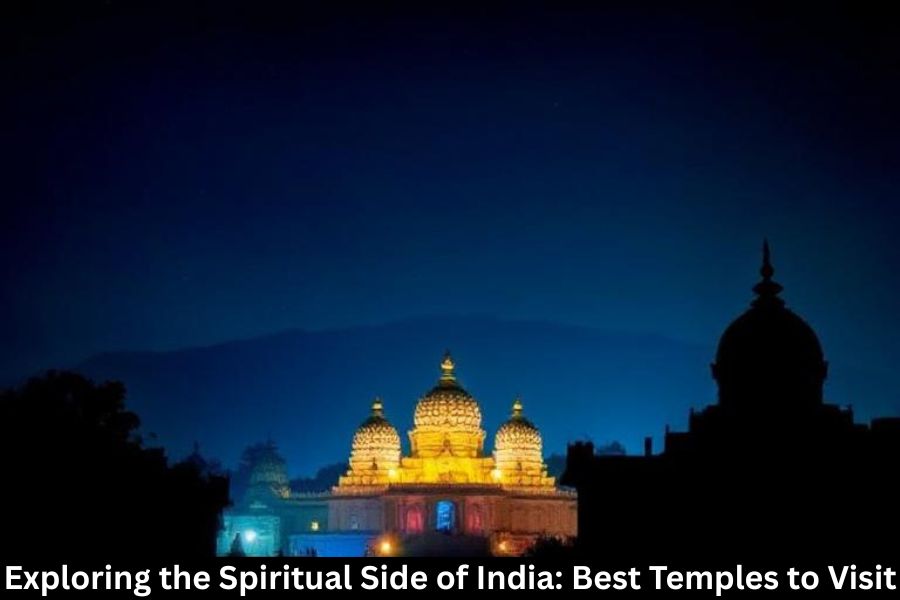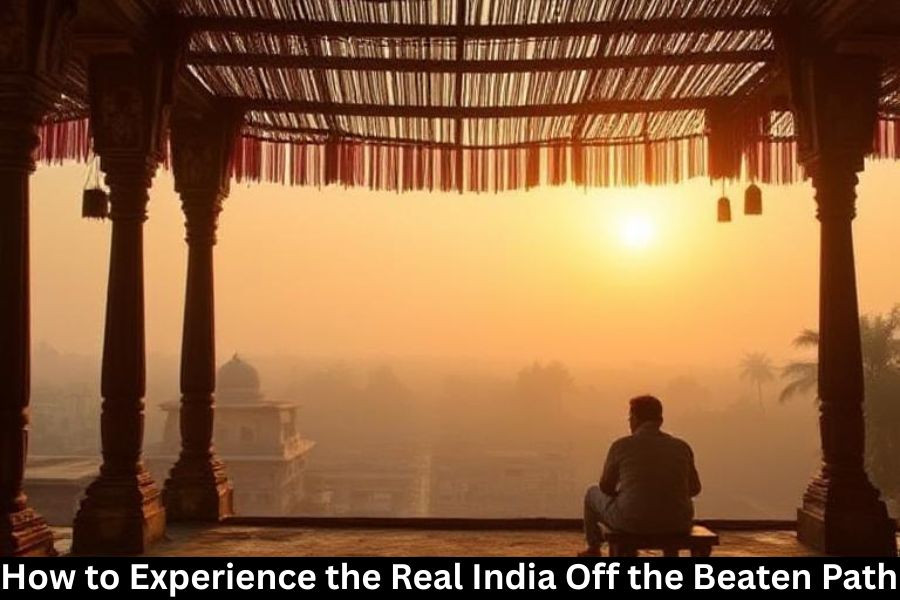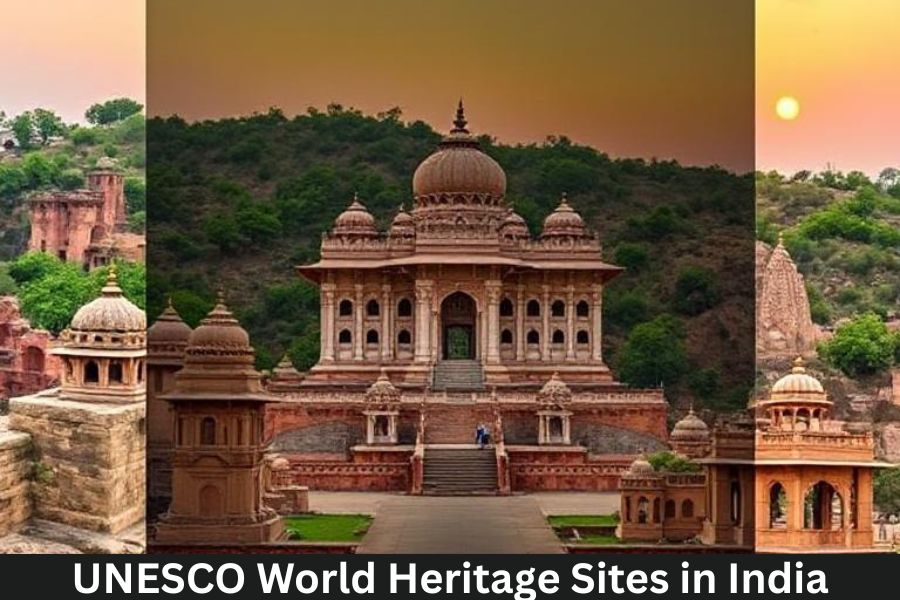India is known for its rich spiritual heritage, and at the heart of this heritage lies its numerous temples, each one serving as a spiritual sanctuary. These temples are not only places of worship but also architectural masterpieces, cultural hubs, and sacred spaces where millions of pilgrims and tourists alike find peace and solace. Whether you’re looking for a deep spiritual connection or simply curious about the country’s unique culture, visiting these temples offers an immersive experience that is both enlightening and humbling.
What Makes Temples in India Unique?
The temples of India are far more than just places to offer prayers. They are cultural landmarks and architectural wonders, intricately designed to reflect the spirituality of the region. Many temples are built in accordance with Vastu Shastra (traditional Indian architecture), where every element from the layout to the decorations is symbolic. But beyond their architecture, what truly sets these temples apart is the deep sense of devotion and the spiritual energy that permeates the space.
Architectural Marvels
Indian temples are known for their towering spires, elaborate carvings, and intricate sculptures. Some temples, like the Brihadeeswarar Temple in Tamil Nadu, are built to astounding scales and are adorned with exquisite artwork. These architectural marvels tell stories of ancient deities, kings, and battles, creating an immersive historical experience as well as a spiritual one.
Spiritual Significance
Each temple has a unique story, a divine connection, and a spiritual purpose. Temples in India are dedicated to various deities, and their rituals and ceremonies often reflect the specific deity’s mythology. From Lord Vishnu and Shiva to Goddess Durga, each temple offers a glimpse into the devotion and culture associated with these divine beings.
Top Temples to Visit in India
India boasts a plethora of temples, but some of them have become iconic due to their historical, spiritual, and architectural significance. Here are some of the most famous temples you should consider visiting on your spiritual journey:
Tirupati Balaji Temple (Andhra Pradesh)
One of the most visited pilgrimage sites in the world, the Tirupati Balaji Temple is dedicated to Lord Venkateshwara, an incarnation of Lord Vishnu. The temple, located on the Tirumala hills, is renowned for its stunning location, grand architecture, and the deeply spiritual atmosphere it offers.
Golden Temple (Amritsar)
The Golden Temple, or Harmandir Sahib, is the holiest gurdwara in Sikhism. Its golden structure set against a reflective pool creates a mesmerizing sight. The temple is a symbol of peace, equality, and service to humanity, and visiting it offers a sense of tranquility and spiritual awakening.
Kashi Vishwanath Temple (Varanasi)
One of the most famous temples dedicated to Lord Shiva, the Kashi Vishwanath Temple in Varanasi is an essential stop for those wishing to experience India’s spiritual heart. Situated on the banks of the Ganges River, it attracts millions of pilgrims each year seeking to attain moksha (liberation from the cycle of life and death).
Jagannath Temple (Puri)
Famous for the Rath Yatra festival, the Jagannath Temple in Puri is one of the four Char Dham pilgrimage sites. The temple’s majestic architecture, coupled with the lively atmosphere during festivals, makes it an unforgettable visit.
Somnath Temple (Gujarat)
The Somnath Temple, believed to be one of the twelve Jyotirlingas of Lord Shiva, is a stunning seaside temple with a rich history. The temple’s resilience, having been destroyed and rebuilt multiple times, represents the strength of faith and devotion.
Meenakshi Temple (Madurai)
Known for its colorful and intricate carvings, the Meenakshi Temple in Madurai is dedicated to Goddess Meenakshi and Lord Sundareswarar. This temple is a great example of Dravidian architecture and is a must-visit for its artistic beauty.
Akshardham Temple (Delhi)
A modern architectural marvel, the Akshardham Temple in Delhi is a blend of tradition and technology. Known for its grand scale, the temple features exhibitions on ancient Indian culture, showcasing the country’s spiritual journey.
Brihadeeswarar Temple (Thanjavur)
A UNESCO World Heritage Site, this temple is an iconic example of Chola architecture. Dedicated to Lord Shiva, the Brihadeeswarar Temple’s towering structure and detailed sculptures make it a must-see.
Dilwara Temples (Mount Abu)
The Dilwara Temples are Jain temples famous for their intricate marble carvings. Set in the hills of Mount Abu, they are among the most famous Jain pilgrimage sites and offer a serene atmosphere for reflection.
Sree Padmanabhaswamy Temple (Thiruvananthapuram)
This temple, dedicated to Lord Vishnu, is one of the richest temples in the world. Its beautiful architecture and the serene atmosphere make it a place of spiritual renewal.
Spiritual Practices at Indian Temples
Visiting temples in India is not just about sightseeing; it’s about experiencing spirituality. Temples host numerous rituals and practices that can be fascinating to observe and participate in.
Rituals and Offerings
The daily rituals at temples, like the morning aarti (prayer), are an integral part of temple life. Visitors can participate in offerings like lighting incense, offering flowers, or performing prayers. These acts of devotion are a way to connect with the divine and seek blessings.
Meditation and Reflection
Many temples also provide a peaceful environment for meditation and reflection. Whether it’s at the Golden Temple or the quiet halls of the Akshardham Temple, the stillness of these places encourages inner peace and mindfulness.
The Role of Pilgrimages in Hinduism
In Hinduism, a pilgrimage to a sacred site, known as ‘Tirtha Yatra,’ is a journey undertaken to gain spiritual merit. The temples mentioned above are often key destinations on these pilgrimages, and they are considered to be sacred spaces where devotees seek to cleanse themselves spiritually.
Popular Pilgrimage Routes in India
Some of the most famous pilgrimage routes in India include the Char Dham Yatra (covering Kedarnath, Badrinath, Yamunotri, and Gangotri) and the Chardham of South India (comprising Rameswaram, Kanchipuram, and more). Pilgrims often visit multiple temples during these routes to deepen their devotion.
Visiting Temples as a Tourist: What You Should Know
Visiting temples in India requires understanding local customs, etiquette, and behavior.
Etiquette and Customs
Before entering a temple, it’s essential to remove your shoes and ensure you’re appropriately dressed. Many temples have strict codes of conduct, including rules against taking photos in certain areas. Be respectful of the sacred nature of the space.
Dress Code and Behavior
Temples often require modest attire, such as covering your shoulders and legs. It’s also crucial to speak softly, avoid loud noises, and respect the sanctity of the temple.
How Temples Promote Peace and Wellness
Temples in India are not just places of worship; they are spaces where people can experience peace and mental well-being. The serene surroundings, quiet atmosphere, and beautiful architecture foster a sense of inner peace.
Healing Energies and Peaceful Surroundings
Many visitors report feeling a sense of calm and spiritual healing after visiting these temples. The meditative atmosphere and divine energy present in these spaces can have a positive effect on mental health.
The Importance of Quiet Reflection
Taking time to sit quietly, reflect, or meditate in a temple can be transformative. These spaces offer a break from the hustle and bustle of everyday life, allowing visitors to reconnect with their inner selves.
The Connection Between Nature and Temples in India
Indian temples often blend harmoniously with nature, incorporating natural elements into their designs.
Temples and Sacred Groves
Many temples are located in places surrounded by forests, rivers, or mountains, adding a spiritual dimension to the natural environment. These sacred groves are considered to be the abodes of deities.
Natural Elements in Temple Architecture
Elements such as sunlight, water, and air are often incorporated into temple architecture. For example, the placement of temples near rivers or hills is believed to enhance the spiritual energy of the space.
Conclusion
India’s temples are more than just places of worship—they are living, breathing monuments to the country’s spiritual and cultural heritage. Whether you’re a pilgrim seeking solace, a traveler seeking cultural experiences, or someone who just wants to witness India’s architectural beauty, these temples offer an unforgettable experience. Their spiritual energy, combined with the stories they tell, creates a journey that stays with you long after you leave.
FAQs
1. What is the best time to visit temples in India?
The best time to visit Indian temples is during the cooler months (October to March), especially for outdoor temples. However, visiting during major festivals can also enhance your experience.
2. Are there any temples that welcome non-Hindus?
Yes, many temples in India welcome non-Hindus. However, it’s essential to check with the temple management regarding any specific restrictions or guidelines.
3. How long should I plan for a temple visit?
It typically takes 1 to 2 hours to visit a temple, though more significant temples and festivals might require a longer visit.
4. What should I wear when visiting a temple in India?
Modest clothing is required. Women should cover their shoulders and avoid short skirts or dresses, while men should avoid wearing shorts.
5. Can I visit temples if I’m not religious?
Absolutely! Temples in India are open to everyone, regardless of their religious beliefs. They offer a chance to explore India’s culture, history, and architecture.



